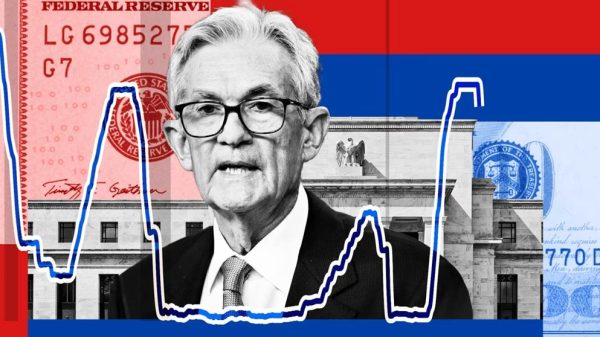The British pound is trading near its highest level against the U.S. dollar in over three years, drawing attention from investors and market analysts alike. On Wednesday morning in London, sterling hovered around $1.36, marking an 8.7% gain against the dollar so far this year. However, opinions are divided on whether further gains are on the horizon.
What’s Driving Sterling’s Strength?
According to analysts, the pound’s recent rally is not primarily driven by confidence in the British economy but rather by weakness in the U.S. dollar. Janet Mui, head of market analysis at RBC Brewin Dolphin, attributes sterling’s upward trajectory to underlying concerns about the greenback. She points to U.S. economic uncertainty, driven by unpredictable fiscal policies and fears of de-dollarization, as key factors weighing on the dollar this year.
Paul Jackson, global head of asset allocation research at Invesco, echoes this sentiment. He notes that the pound’s recovery has been fueled in part by a bounce-back from the “extreme lows” seen after the U.K.’s disastrous mini-budget in 2022 under former Prime Minister Liz Truss. However, Jackson also highlights that sterling’s simultaneous weakness against the euro — down 2.9% year-to-date — underscores the central role of dollar weakness in the pound’s recent gains.
The Outlook for GBP/USD
Looking ahead, analysts are divided on sterling’s potential for further gains. Jackson forecasts that GBP/USD could climb to $1.40 within the next 12 months, representing an approximate 2.9% premium from current levels. He bases this projection on expectations of continued dollar weakness as the U.S. economy slows and investor sentiment remains cautious.
By contrast, Brian Mangwiro, an investment manager at Barings, takes a more bearish view. He predicts GBP/USD will fall to $1.30 within six months, citing the U.K.’s slowing economic growth and inflation as key headwinds. Mangwiro also expects the Bank of England to cut interest rates further, which could weigh on the pound.
Geopolitical Factors and the Euro
Beyond the dollar, analysts suggest that improved relations between the U.K. and the European Union could provide a catalyst for sterling. RBC Brewin Dolphin’s Mui notes that any concrete steps toward stronger U.K.-EU ties could support the pound over the long term.
Meanwhile, the euro may present its own challenges for sterling. Jackson believes the euro could strengthen on optimism surrounding fiscal stimulus in Germany and broader European economic recovery. He projects GBP/EUR to settle at 1.15 within a year, slightly below its current level of 1.173.
Risks to Consider
While de-dollarization has been a hot topic in financial markets, Mangwiro argues that such fears may be overstated. He expects U.S. economic resilience and corporate earnings growth to ultimately support a rebound in the dollar. If this materializes, it could reverse some of sterling’s recent gains.
Additionally, softer U.K. economic momentum and a more dovish Bank of England could limit the pound’s upside in the near term. Mui cautions that geopolitical developments and global market trends will remain crucial variables in determining sterling’s trajectory.











